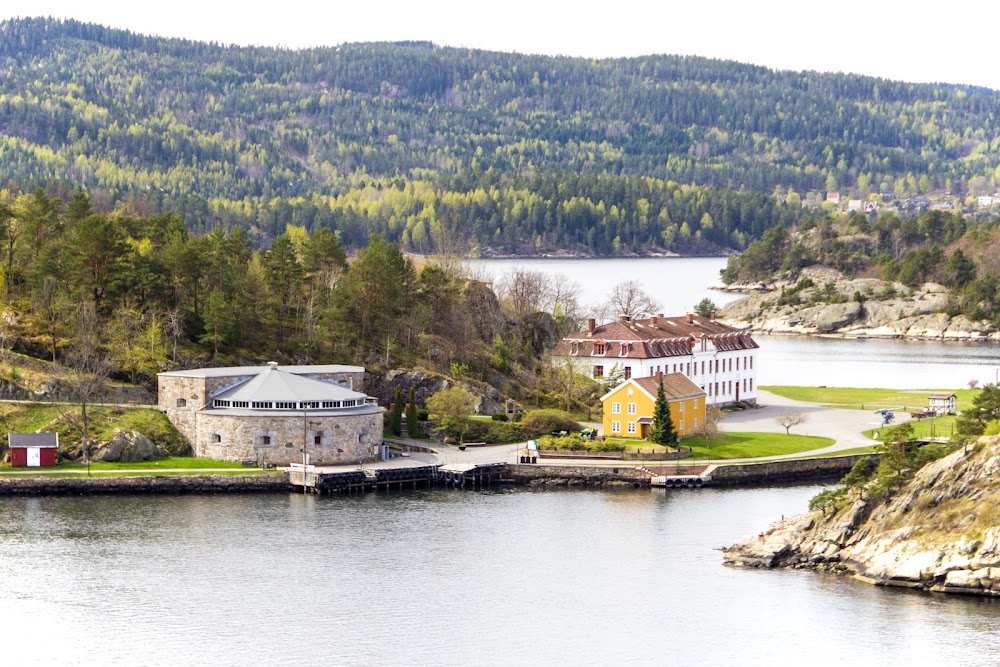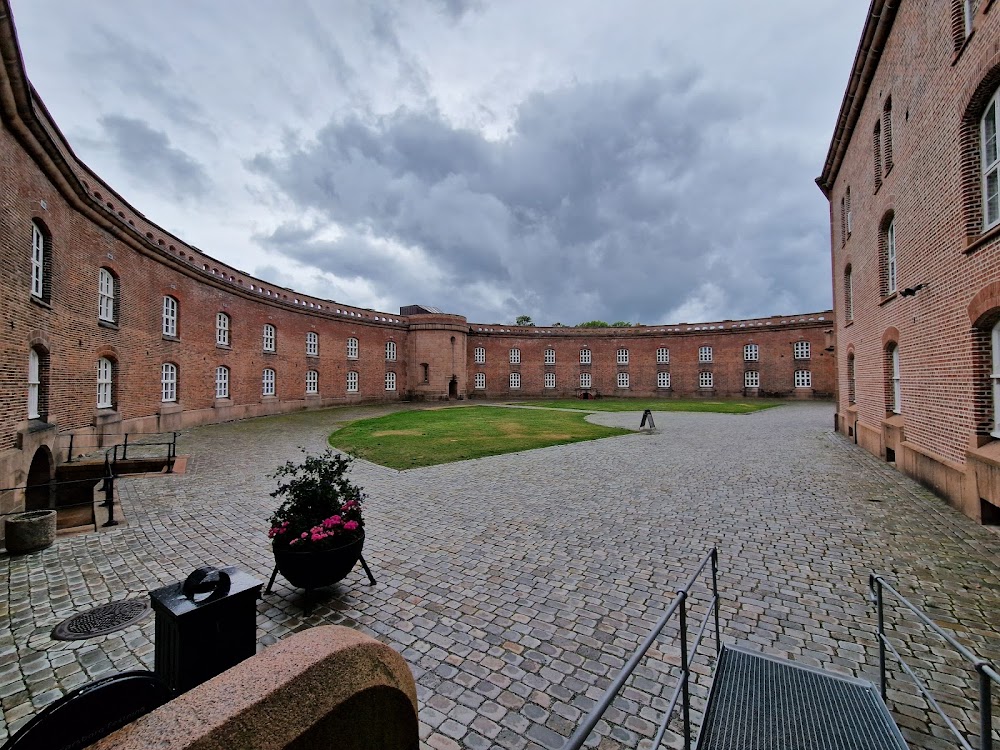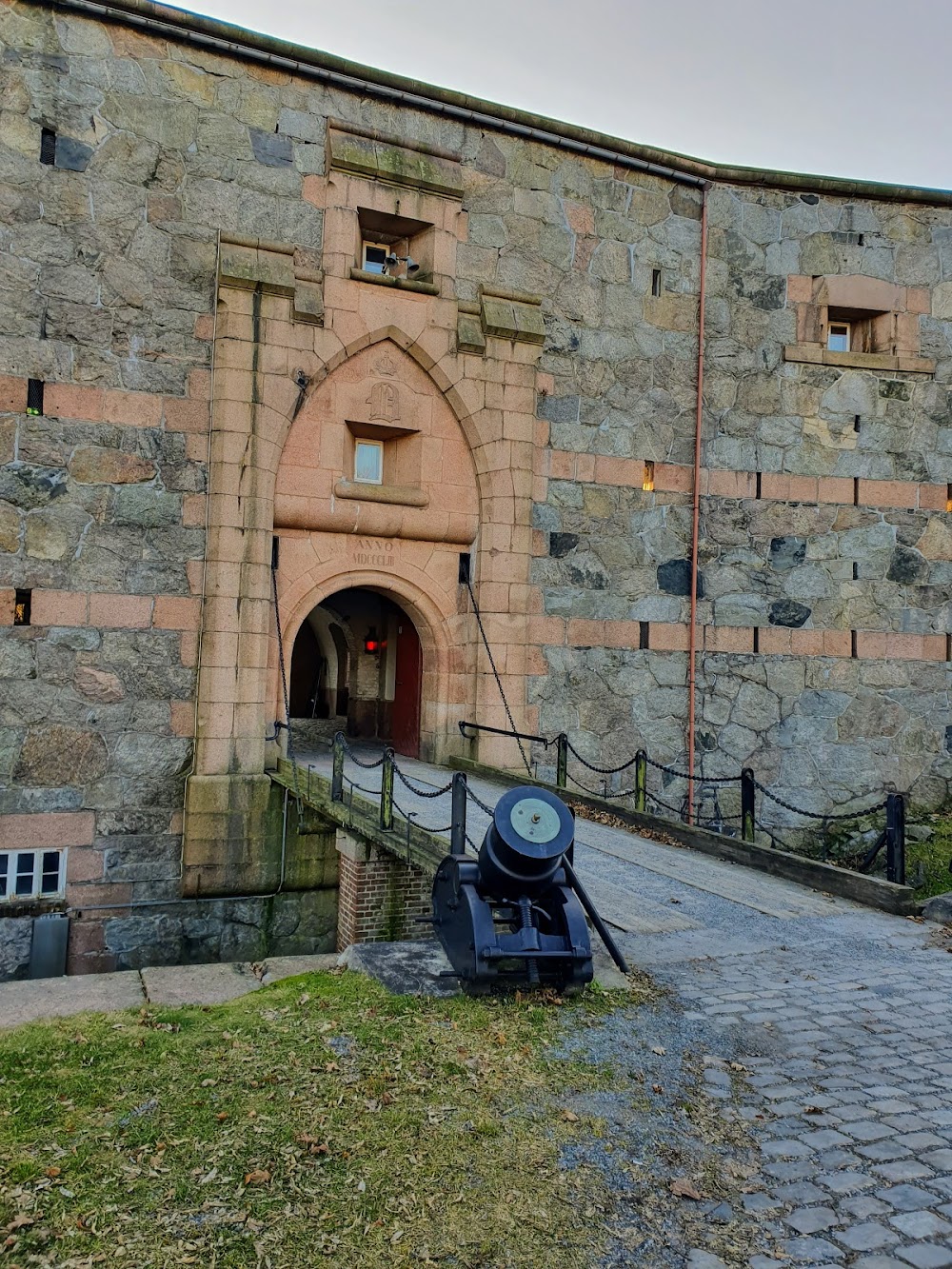Oscarsborg Fortress (Oscarsborg Festning)
Related Places
Overview
Nestled in the scenic Viken County of Norway, Oscarsborg Fortress is a remarkable site steeped in history and grandeur. Located on the small islands of Kaholmen in the Drøbak Sound, this fortress boasts a rich narrative that dates back to the 19th century, making it a captivating destination for history enthusiasts and casual visitors alike.
The construction of Oscarsborg Fortress began in 1846, commissioned by King Oscar I of Sweden and Norway. The aim was to create a formidable defensive structure to protect the vital naval route leading to Oslo, the nation's capital. Given the strategic importance of its location, a robust defense system was essential to fend off potential maritime threats. After approximately 33 years of construction, the fortress was officially commissioned for active duty in 1853.
Oscarsborg is a testament to 19th-century military engineering, showcasing a blend of solid stone and brick in its design. Its architecture features thick walls and heavily fortified galleries, crafted to withstand severe attacks. At the time of its completion, the fortress was equipped with cutting-edge armament, including large-caliber cannons and underwater torpedoes, underscoring its significance as a military stronghold.
One of the fortress's most notable features is its Canon Battery, which housed three massive 28 cm caliber guns affectionately named "Moses," "Aron," and "Joshua." These cannons played pivotal roles during significant historical events. Furthermore, the fortress included an underground torpedo battery, regarded as state-of-the-art during its construction, adding to its formidable defenses.
The highlight of Oscarsborg's storied past is its role in World War II. On the night of April 8-9, 1940, the fortress became crucial in safeguarding Norway from the advancing German navy. As German forces initiated Operation Weserübung, they were unaware of Oscarsborg's readiness for battle. In the early hours of April 9, Colonel Birger Eriksen, the commanding officer, made the bold decision to open fire on the leading German warship, the heavy cruiser Blücher. This decisive action led to significant damage to the Blücher, ultimately resulting in its sinking in the Drøbak Sound. This heroic defense delayed the German advance, allowing the Norwegian royal family and government precious time to evacuate and organize a resilient resistance.
Over the years, advancements in warfare and technology diminished the strategic importance of traditional fortresses like Oscarsborg, leading to its decommissioning as an active military site in the 1970s. Nevertheless, its historical significance remains undiminished. Today, it serves as a cultural monument, museum, and popular tourist attraction.
Visitors to Oscarsborg can take guided tours to explore its many tunnels, armament displays, and engaging historical exhibits. The surrounding scenery, enhanced by the natural beauty of the Oslofjord, provides a picturesque backdrop for educational trips and leisurely strolls. During the high season, boat tours transport tourists from the nearby town of Drøbak, ensuring easy and scenic access to this historic site.
Moreover, the fortress stands as a symbol of resilience and tactical brilliance, with annual commemorations held to honor its critical role in safeguarding Norway. Oscarsborg Fortress also serves as a vibrant venue for cultural events, concerts, and theatrical performances, infusing life into its storied bastions.
While built for war, Oscarsborg Fortress now stands as a peaceful relic of the past, merging historical significance with cultural and natural beauty. It invites all who visit to step back in time and experience the remarkable history of Norway.








